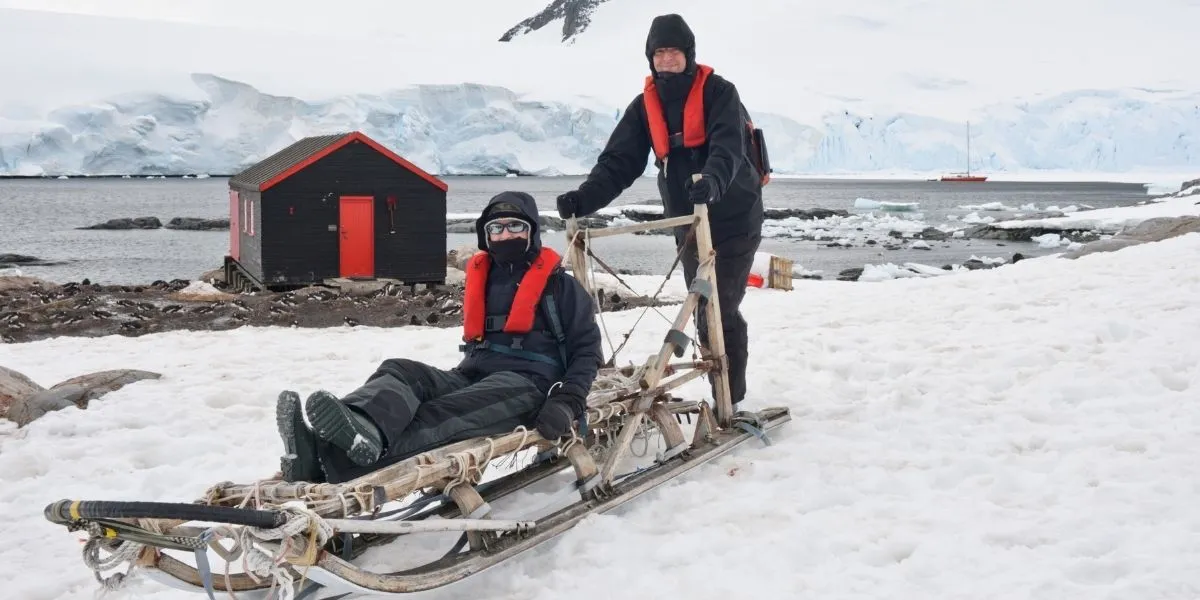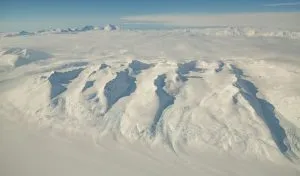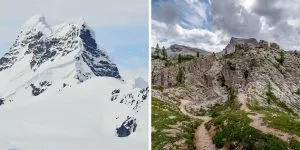Antarctica is one of the most extreme climates on Earth, not to mention being over 1,000km (620 miles) from any other continent. But despite all this, do people live there?
No, Antarctica does not have any permanent human residents because of its inhospitable climate and its isolation. However, there can be anywhere between 1,100 – 5,000 temporary residents from 30 different countries who reside at the 99 research stations there. These are people involved in scientific activity or managing and protecting the region.
Keep reading to find out more about the people that live in Antarctica, how they manage to survive in such cold climates, and how the rules are made without a government.
Do People Live in Antarctica?
Antarctica is the only continent that doesn’t have a permanent human population. However, it still has many temporary residents who are involved in conducting and supporting scientific activity or managing and protecting the Antarctic region.
The number of temporary residents varies with the seasons, being much higher during summer and fairly low during winter.
However, humans do not spend long in Antarctica because it can take a toll on the body physically and emotionally. Some of the physiological effects it can have on the body include disturbed sleep, impaired cognitive ability, interpersonal tension, and conflict1 (source: L.A. Palinkas and P.Suedfeld, The Lancet, Vol. 371, Issue 9607, pp. 153-163, 2008).
What is the Population in Antarctica?
According to the Secretariat of the Antarctic Treaty, there are currently 99 research stations in Antarctica, of which 62 are seasonal and 37 are permanent.
The population of Antarctica is between 1,100 – 5,000 people at any one time. There are people from 30 different countries, although the majority are from the United States, Argentina, and Chile2 (source: CIA Factbook).
The below table shows how many people from each country were present in Antarctica according to the latest count (2017):
| Summer Population | Winter Population | |
|---|---|---|
| US | 1399 | 215 |
| Argentina | 601 | 221 |
| Chile | 433 | 114 |
| Russia | 335 | 125 |
| Australia | 243 | 52 |
| UK | 196 | 44 |
| China | 166 | 32 |
| Japan | 130 | 40 |
| South Korea | 130 | 25 |
| Italy | 120 | 0 |
| India | 113 | 48 |
| Germany | 104 | 9 |
| Spain | 98 | 0 |
| France | 90 | 24 |
| New Zealand | 86 | 11 |
| France & Italy (Joint) | 80 | 13 |
| South Africa | 80 | 15 |
| Norway | 70 | 7 |
| Uruguay | 68 | 8 |
| Brazil | 66 | 15 |
| Belgium | 40 | 0 |
| Poland | 40 | 16 |
| Ecuador | 34 | 0 |
| Peru | 30 | 0 |
| Ukraine | 24 | 12 |
| Bulgaria | 22 | 0 |
| Czech Republic | 20 | 0 |
| Sweden | 20 | 0 |
| Finland | 17 | 0 |
| Belarus | 12 | 0 |
| Netherlands | 10 | 10 |
| TOTAL | 4877 | 1056 |
In addition, a further 1,000 people are present in the waters surrounding Antarctica, including scientists and ship crew.
The largest single Antarctic research station is McMurdo station which is part of the United States Antarctic Program (USAP), this station alone can hold up to 1,258 people3 (source: National Science Foundation).
How Do People Live in Antarctica?
Living in Antarctica is no mean feat. It is one of the coldest places on Earth, with temperatures dipping as low as -30°C (-22°F) in the winter and barely going above freezing in summer4 (source: British Antarctic Survey). At Vostok station, the record low temperature was -89°C (-128°F).
But, people still live in Antarctica at permanent or temporary research stations across the continent or on ships that anchor nearby.
Anyone who will be stationed on the continent must undergo an intense medical screening to ensure they are in perfect health and are not at risk of developing long-term medical conditions since evacuation from Antarctica is very difficult, especially during winter when flights are not possible5 (source: Australian Antarctic Program).
This also includes screening for certain personality traits since life in Antarctica can be mentally stressful due to long periods of isolation, confinement, and the extreme environment6 (source: L.A. Palinkas and P.Suedfeld, The Lancet, Vol. 371, Issue 9607, pp. 153-163, 2008).
Besides the cold temperatures, strong winds mean that snow quickly buries any structures. This is why the buildings are often constructed on legs that allow the snow to pass beneath them and the legs can be raised every few years when the snow eventually builds up.
How is Antarctica Governed?
Although Antarctica is considered to be a continent under the 7 continent model taught in most English-speaking schools, there are no countries or cities there.
Antarctica is not owned by anyone and is governed by the Antarctic Treaty which aims to keep Antarctica as a natural reserve, devoted to peace and science.
An interesting fact about Antarctica is that new rules and regulations that affect Antarctica are decided at the annual Antarctic Treaty Consultative Meeting (ATCM).
Al signatories of the Antarctic treaty are invited to attend and take part in the discussions. Of the 30 countries active in Antarctica as listed above, 29 are consultative parties (except Belarus) which means that they have a say in decisions made at these meetings7 (source: Secretariat of the Antarctic Treaty).
Can You Legally Live in Antarctica?
No, it’s very difficult to legally live in Antarctica if you are a citizen of one of the 54 countries8 (source: US State Department) that have signed the Antarctic Treaty, then you will need permission to visit where you will need to state if you are a temporary resident or a tourist.
If you happen to be a citizen of another country that has not signed the agreement, chances are that you’ll be passing through a port in one of those 54 countries so the same rules apply.
Have People Been Born in Antarctica?
Yes, 11 people have been born in Antarctica, mostly to Chilean and Argentinian parents. The first person to be born in Antarctica was Emilio Marcos Palma Morella who was an Argentinian born in 19789 (source: The Guinness Book of Records, 1986. p.17). His birthplace, at the tip of the Antarctic Peninsula, remains the southernmost birthplace.
Emilio’s father was the Captain of an Argentine base in Antarctica at a time when there were sovereignty disputes in the region since Argentina’s claimed territory overlaps with British and Chilean claimed territory.
At the time, Argentina was led by a military dictatorship headed by Jorge Rafael Videla. He thought that announcing a birth in Antarctica would support their claim to the territory. This is despite the fact that Argentina had already signed the Antarctic Treaty almost 20 years prior to this.
Related Questions
Did Humans Ever Live in Antarctica?
No, there has never been a native human population in Antarctica. Antarctica was formed when the continent split from Africa over 180 million years ago and began its move south. Humans didn’t evolve in Africa until much later, around 2-6 million years ago10 (source: Smithsonian Institute). Antarctica remained undiscovered by humans until 1820 when it was already too cold to inhabit.
Even humans who live in Antarctica temporarily experience psychological changes (as outlined in the first section), so living there permanently would not be suitable under current conditions.
How Many People Have Died in Antarctica?
There are no official death tolls for Antarctica, although the death toll from disasters such as fires and plane crashes is more than 1,000, so the real number is likely much higher11 (source: Wikipedia).
The largest death toll comes from the San Telmo shipwreck in which 644 crew members were caught out in a bad storm in 181912 (source: Secretariat of the Antarctic Treaty).
Could Humans Live in Antarctica If All of the Ice Melted?
Antarctica is a continent with a mountainous landmass underneath all the ice, could humans live here if it all melted? Well, humans already do live in Antarctica at the research bases so we have proven that it’s possible to survive the climate.
However, they are supported by supply bases that provide food and other essentials. Without this support, it’s unlikely that Antarctica could sustain any substantial human population.
See our full article on what would happen if all of the ice in Antarctica melted to find out why.





![Read more about the article Arctic vs Antarctica [12 Key Similarities and Differences]](https://polarguidebook.com/wp-content/uploads/2021/07/Arctic-vs-Antarctica-300x176.jpg)